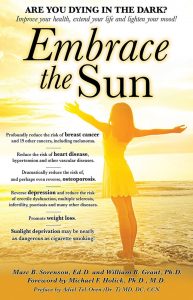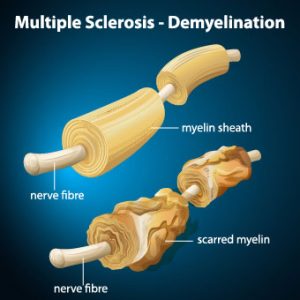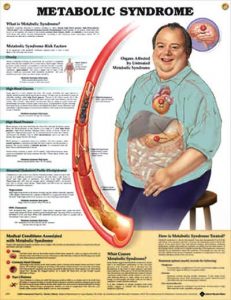Sunlight prevents breast cancer. By Marc Sorenson, EdD.
Sunlight prevents breast cancer by many means. Many scientists believe this. Moreover, sunlight also stimulates human skin to produce vitamin D. Therefore, many professionals assume vitamin D is responsible for the reduced risk. Thus, this may lead them to advocate the use of vitamin D supplementation and totally miss the bigger picture. In addition to vitamin D, sunlight or sunlamps produce many supplementary and healthful photoproducts. Among others, sunlight produces nitric oxide, dopamine, serotonin, endorphin and brain-derived neurotropic factor (BDNF). In addition, all these photoproducts are vital to health. Hence, it is likely that these healthful photoproducts lead to an inhibition of breast cancer.
New research shows that sunlight prevents breast cancer independently of vitamin D.
Consequently, it should not surprise us that for breast cancer, sunlight’s effects go beyond vitamin D. Researchers at Children’s Hospital Oakland Research Institute, used a mouse model that easily develops breast cancer. They also treated them with UVR light such as found in sunlight. Much as we might expect, they found that UVR treatments produced significant anti-cancer effects. Furthermore, they found that neither dietary vitamin D nor topical vitamin D influenced cancer risk. Because of their findings, they stated the following: “UVR’s inhibitory effects occur irrespective of whether or not the treatment increases circulating D3 in the mice.” Then they also made another important comment regarding their research. “Therefore, supplemental D3 may not mimic all possible beneficial effects of UVR. Uncovering non-D3-mediated mechanisms of UVR tumor inhibition may lead to novel strategies for cancer prevention.”
An important point about how sunlight prevents breast cancer.
Finally, there is no doubt that vitamin D has anticancer benefits. This research however, is especially relevant because it corroborates what I have said in my book, Embrace the Sun. Consequently, we must not put all of the benefits of sunlight in the vitamin D box. Furthermore, sun exposure performs myriad miracles beyond vitamin D. One of those miracles may be breast cancer prevention and inhibition. In addition, if we erroneously believe we can obtain all of the sun’s benefits from popping a pill, we may miss the holistic effects sunlight, which provide a cornucopia of salubrious results.
So, safely (without burning) embrace the sun, since it helps prevent breast cancer.
For more information, visit sunlightinstitute.org. Another great tip is to read the book, Embrace the Sun.
Happy sunning!
MS prevention by sunlight. By Marc Sorenson, Ed.D. Sunlight Institute
What is MS?
MS is a painful, debilitating, crippling, disease in which immune cells initiate an inflammatory response against myelin. Myelin is the nerves’ protective cover. It is rather like an electric wire that has lost its rubber cover. So, this process, known as demyelination, leaves the nerves bare and susceptible to “short circuiting.” From 85 to 170 people per 100,000 in the USA suffer from MS, and the rate among women, during the period from 1991 through 1994, has increased by 50% compared to the period from 1982 through 1986. Also, as of 2010, the last year for which we could find statistics, there were 350,000-400,000 cases diagnosed in the USA.
There is no doubt that sunshine reduces the risk of MS, because The risk of multiple sclerosis in far northern areas, where there is little sunshine, is more than 100 times greater than it is in equatorial areas. So, in those areas, where sunlight is intense, due to directness of the sun, the rate of MS approaches zero. [1], [2], [3]
And do you know anyone who suffers from multiple sclerosis? They should probably read this blog and then obtain plenty of non-burning sun exposure.
The latest Research on MS, sun exposure and vitamin D.
A study carried out in Southern California corroborates the sun exposure benefits to MS reduction.[4] First of all, the researchers recruited members of three different ethnicities (blacks, Hispanics and whites). In addition, they further divided those ethnicities into those who suffered from MS (known as cases) and those who were free from the disease (controls). They then simultaneously examined lifetime sun exposure and blood vitamin D levels, accounting for genetic ancestry and other factors. The results were impressive:
- Among blacks, the highest lifetime sun exposure was associated with a 47% lower risk, independently of blood levels of vitamin D.
- Among whites, the highest lifetime sun exposure was associated with a 32% lower risk. In this group, highest vitamin D levels also associated with a lower risk of MS.
- Among Hispanics, the highest lifetime sun exposure was associated with a 34% lower risk, independently of blood levels of vitamin D.
This is just the latest research to determine that sun exposure lessened the risk of MS independently of vitamin D. In addition, researchers used animals with experimental autoimmune encephalomyelitis (EAE) (an experimental form of MS). It was induced in animals in a lab setting and then used to determine the relative influences of UVR and vitamin D on MS. In conclusion, they stated, “These results suggest UVR [sun] is likely suppressing disease independent of vitamin D production. Thus, vitamin D supplementation alone may not replace the ability of sun (UV) to reduce MS susceptibility.”[5]
More on sunlight and MS from the same researchers
Later on, some of these same researchers investigated the mechanism by which sun exposure suppressed the disease and determined that UV light selectively inhibits spinal cord inflammation and demyelination.[6]
Furthermore, in another study, scientists performed an investigation with UVR. UVR is the same radiation emitted by the sun and sunbeds or sunlamps. It was administered to animals with EAE.[7] First of all, the researchers found that UVR treatments stopped inflammation and demyelination of the spinal cord. It did so by inhibiting a chemical known as a chemokine, also known as a cytokine. Cytokines are specialized proteins that are either inflammatory or anti-inflammatory in their nature. Therefore, inflammatory cytokines or chemokines are the cause of inflammation and autoimmune attacks resulting in MS. In addition, UVR directly initiated the MS-ameliorating effects, independent of vitamin D.
To conclude:
Finally, as wonderful as vitamin D is, we should realize this: The production of vitamin D is only one of the profoundly healthful effects that are due to Sun Exposure. Hence, those who take vitamin D and believe they will derive all the benefits of sun exposure, are wrong. Consequently, they could be “dead wrong” in the case of a scourge like MS. So, be sure to obtain your full share of non-burning sunlight whenever possible. It could save your life. And, it could save the lives of those who have the disorder or who might be susceptible to it. Maybe we should start paying more attention to our sun exposure?
This is one of many blogs that I and others have written on this subject. In addition, here are a few more that may interest you:
http://sunlightinstitute.org/research-shows-sun-exposure-thwarts-multiple-sclerosis-ms/
http://sunlightinstitute.org/a-vitally-important-study-on-sunlight-and-multiple-sclerosis-ms/
Embrace the sun! Without burning, of course
[1] Alter M, Yamoor M, Harshe M. Multiple sclerosis and nutrition. Arch Neurol l974;31:267-72.
[2] Kurtkze, J. Geography in multiple sclerosis. J Neurol 1977;215:1-26.
[3] Hayes CE, Cantorna MT, DeLuca HF.Vitamin D and multiple sclerosis. Proc Soc Exp Biol Med 1997;216:21-27
[4] Langer-Gould A, Lucas R, Xiang AH, Chen LH, Wu J, Gonzalez E, Haraszti S, Smith JB, Quach H, Barcellos LF. Nutrients. 2018 Feb 27;10(3).
[5] Becklund BR, Severson KS, Vang SV, DeLuca HF. UV radiation suppresses experimental autoimmune encephalomyelitis independent of vitamin D production. Proc Natl Acad Sci U S A. 2010;107:6418-23.
[6] Wang Y, Marling SJ, Beaver EF, Severson KS, Deluca HF. UV light selectively inhibits spinal cord inflammation and demyelination in experimental autoimmune encephalomyelitis. Arch Biochem Biophys. 2015 1;567:75-82
[7] Wang Y, Marling SJ, Beaver EF, Severson KS, Deluca HF. UV light selectively inhibits spinal cord inflammation and demyelination in experimental autoimmune encephalomyelitis. Arch Biochem Biophys. 2015 1;567:75-82.
Marc Sorenson, EdD, for breast cancer prevention. 
While many doctors know that ultraviolet radiation (UVR) from sunlight reduces risk of breast cancer, they have missed something. UVR stimulates production of vitamin D in human skin. Therefore, many health professionals assume that vitamin D is responsible for the reduced cancer risk. This may lead them to advocate the use of vitamin D supplementation and totally miss the bigger picture. In addition to vitamin D, UVR from sunlight or sunlamps produces many supplementary healthful photoproducts. Among others, nitric oxide, serotonin, endorphin and BDNF are produced by sunlight, and these photoproducts are vital to health. And, it is likely that these healthful photoproducts lead to an inhibition of breast cancer.
New research shows that sun exposure per se is capable of reducing the risk of breast cancer.
Consequently, it should not surprise us that for breast cancer, sunlight’s effects go beyond vitamin D.[1] Researchers at Children’s Hospital Oakland Research Institute, used a murine model (mice) that easily develops breast cancer, and treated them with UVR. Much as we might expect, they found that UVR treatments produced significant anti-cancer effects. Furthermore, they found that neither dietary vitamin D nor topical vitamin D influenced cancer risk. Because of their findings, they stated the following: “UVR’s inhibitory effects occur irrespective of whether or not the treatment increases circulating D3 in the mice.” Also, they made one more important comment regarding their research on breast cancer and UVR. “Therefore, supplemental D3 may not mimic all possible beneficial effects of UVR, and uncovering non-D3-mediated mechanisms of UVR tumor inhibition may lead to novel strategies for cancer prevention.”
An important point about vitamin D, sunlight and breast cancer.
Finally, there is no doubt that vitamin D has anticancer benefits. This research however, is especially relevant in that it corroborates what I have said in my soon-to-be-released book, Embrace the Sun. First of all, we must not put all of the benefits of sunlight in the vitamin D box. Secondly, sun exposure performs myriad miracles beyond vitamin D. One of those miracles may be breast cancer prevention and inhibition. Thirdly, if we erroneously believe that we can obtain all of the sun’s benefits from popping a vitamin D pill, we may miss the holistic effects of the sun, which provide a cornucopia of salubrious results.
So, safely (without burning) embrace the sun and ease your mind about breast cancer.
[1] Anastasia M. Makarova, Flora Frascari, Parastoo Davari, Farzam Gorouhi, Philip Dutt, Lynn Wang, Akash Dhawan, Grace Wang, Jeffrey E. Green, Ervin H. Epstein, Jr. Ultraviolet radiation inhibits mammary carcinogenesis in an ER negative murine model by a mechanism independent of vitamin D3. Downloaded from cancerpreventionresearch.aacrjournals.org on April 12, 2018.
By Marc Sorenson, EdD. Sunlight Institute
One of the more interesting research papers in recent memory demonstrates that the amount of sunlight during the month of birth may increase the life span of adult diabetics.[1] The researchers studied the death records of 829,000 diabetics, 90% of whom were type 2. Among the most interesting findings was that with rapidly decreasing ultraviolet radiation (UVR or sunlight) at the time of birth, lifespan decreased in better nourished, white female diabetic population.
Diabetic males, on the other hand, gained 6.1 years of life when exposure to sunlight was increasing at birth month, whereas females gained 2.3 years.
This all makes perfect sense, since fall weather is a time of rapidly decreasing sunlight intensity and a drop in temperature, which would decrease vitamin D and other photoproducts, and cause people to be outdoors less.
The researchers concluded that “Rapidly changing UVR at the equinoxes modulates the expression of an epigenome involving the conservation of energy, a mechanism especially canalized in women. Decreasing UVR at conception and early gestation stimulates energy conservation in persons we consider ‘diabetic’ in today’s environment of caloric surfeit. In the late 19th and early 20th centuries ethnic minorities had poorer nutrition, laborious work, and leaner bodies, and in that environment a calorie-conserving epigenome was a survival advantage. Ethnic minorities with a similar epigenome lived long enough to express diabetes as we define it today and exceeded the lifespan of their nondiabetic contemporaries, while that epigenome in diabetics in the nutritional environment of today is detrimental to lifespan.”
So as I see it, those who are programmed genetically for diabetes can increase lifespan by being born at the right time of year. If only their parents had known!
[1] George E Davis Jr* and Walter E Lowell. Variation in ultraviolet radiation and diabetes: evidence of an epigenetic effect that modulates diabetics’ lifespan. Clinical Epigenetics 2013, 5:5.


